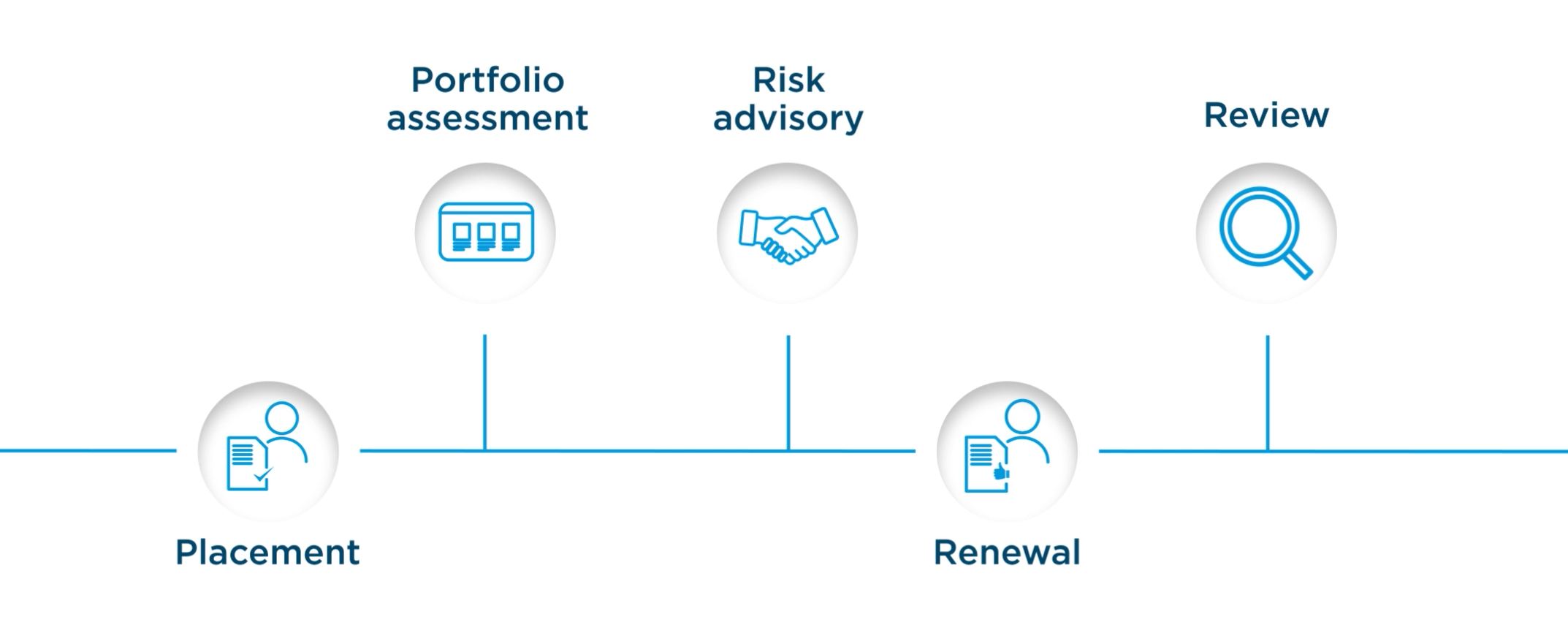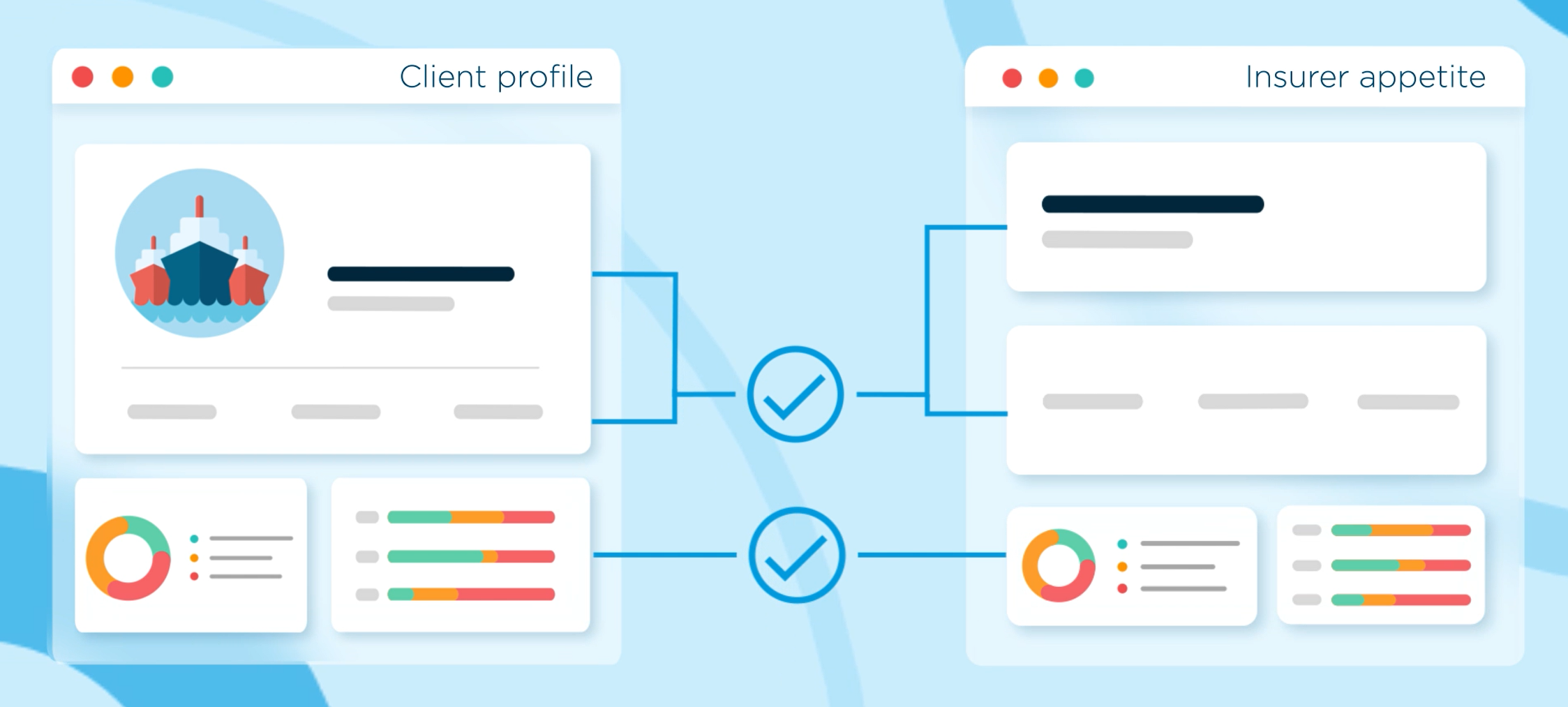With access to the same data as underwriters, brokers can understand how client risk is perceived and offer a suite of services that address areas of concern. This differentiates brokers from the rest of the market and provides long-term revenue streams that reinforce client relationships.
Increase monetisation potential
A broker’s relationship with a client is mostly based on the monetisation of placement and renewal opportunities. Relationships are important as they’re the primary method of differentiation brokers currently have. The closer you are to your client, the better you’ll understand their business. A better understanding of business helps match exposure to capital and drive broker commissions.
We’ve previously discussed how a transactional relationship like this has a limited number of touch points. Brokers are primarily a vehicle for the client to obtain necessary cover, which can lead to intermittent use of a broker’s expertise and network. Some brokers offer services that compliment placement. Knowledge of the market is applied to a client’s business over time, directing investment that limits client exposure. The quality of services depends on the level of insight a broker can pass on to a client. Service quality can dramatically increase with new IoT applications that provide access to a wealth of data. Enriching services with such data benefits clients by:
- Creating a safer operation
- Lowering renewal premiums
- Improving deployment of capital within client organisations
Adding value to client services so that they’re attractive long-term investments increases the overall number of touch points with a client. These touch points increase total monetisation opportunities. At scale, this generates a more sustainable and lucrative business for brokers of all sizes.

Fig 1: Total touch points with client that leverages broker advisory services.
Know how Underwriters see risk
To provide risk mitigation services a broker needs to understand how risk will be perceived. Underwriters currently use risk profiles based on IoT data to assess the potential risk of accounts. IoT provides a greater pool of data on a specific risk. When trends are drawn from this data, it uncovers behavioural traits. Behaviour relates directly to the operation of the fleet or vessel, making it a far more accurate indicator of risk vs traditional static data.
Brokers can leverage IoT applications, like Quest Marine, to access to the same risk profiles as underwriters and see which behaviours are perceived as high risk. This information can be applied to risk advisory services, giving clients insight into how the market views their operation and where they can improve. As profiles are updated in real-time, brokers will always maintain a relevant view of client risk.

Fig 2: With Quest Marine brokers can understand the relationship between client risk profile and insurer appetite.
Simple to scale
Risk profiles don’t require complicated training to understand. Concirrus takes a transparent approach to risk profiling and displays the risk drivers behind its pricing capabilities. Negating a ‘black box’ approach means brokers view the relative weight of influential factors and inform clients. Simplicity means both new and seasoned brokers can interpret and action insight.
Example: Helping a broker grow an account
Concirrus worked with a leading broker who identified an account with an attractive risk profile but limited coverage. After analysing the client’s portfolio in detail, a comprehensive broker report was put together with new insights into client risk. The broker was then able to share detailed information with the client regarding their risk profile and offer actionable insights into improvements. This resulted in the broker acquiring the rest of the account and maximizing revenue share.
What did this report look like?
A complete breakdown of operation, port state control and risk scoring for every vessel in the fleet was produced. This revealed consistencies in behaviour and highlighted any specific vessels that fell outside of the norm. Some vessels showed higher mileage, others had significantly higher defects that impacted their overall risk score. When all variables were considered, they culminated in a behavioural age, which showed the expected age of a vessel given the impact of operations.
Ranking these vessels based on the difference between behavioural age and actual age helped the client prioritise which vessels to invest in first, whilst details emphasized where to invest in each vessel.
For more on how applications like Quest Marine can help your business, get in touch.

Powering the future of insurance
If you want to book a 1-1 meeting with us then let us know by clicking the link below.
Book a meeting